|
Sheep milk: A pertinent functional food
Arpita Mohapatra, Ajay Kumar Shinde, Raghvendar Singh Abstract Modern human diet and changes in lifestyle are emerging as a challenge in developing countries resulting to endless ailments. Thus, in modern spectra of human health, bioactive foods play a pivotal role. Under the umbrella of food and nutrition security, functional dairy foods have become the need of the hour. Sheep milk is one of the functionally active dairy foods and it is also considered as nutritional powerhouse. The beneficial role of sheep milk results from its fatty acid, immunoglobulin and non-immune protein contents. In human gut, milk proteins turn into excellent source of bioactive peptides with antioxidative, antimicrobial, antihypertensive, immunomodulatory and antithrombotic role. It is also used in anti-ageing formulations and cosmetic soap preparations to soothe psoriasis and skin eczema like chronic conditions. The unique physicochemical and biochemical properties of sheep milk also include prebiotics and probiotics which make it perfect functional food for human health promotion and disease risk reduction. The milk from Indian sheep is relished by the shepherds and their households. They claim that it has many health benefits, but it is an untapped area by the Indian researchers. The major challenge in Indian prospect is non availability of dairy sheep breed, but their milk functional potential cannot be ignored. This review is focused on worldwide work done on sheep milk for its unique functional characteristics. Keywords Sheep milk; Milk composition; Functional food; Bioactive peptides READ MORE
0 Comments
 Livestock farming is practiced by at least 80% of the rural population and plays a key role in Mali’s economy. It contributes about 12% to the country’s GDP. Approximately 85% of Malians own small ruminants, especially women. Unfortunately, low productivity and marketing constraints limit the ability of ruminant livestock to provide a secure livelihood. Over 30 million sheep and goats provide livelihoods for nearly 5 million Malians and food for millions of Senegalese, Guinean and Ivorian neighbours. Catalyzing the expansion of small ruminant livestock value chains in Mali will increase livelihoods, food security and nutrition for millions of Malians, especially women and youth. As part of the One CGIAR 2030 research and Innovation Strategy, ‘Sustainable Animal Productivity for Livelihoods, Nutrition, and Gender Inclusion’ (SAPLING) is among 32 initiatives funded by One CGIAR designed to achieve a world with sustainable and resilient food, land and water systems to deliver more diverse, healthy, safe, sufficient and affordable diets, and to ensure improved livelihoods and greater social equality within planetary and regional environmental boundaries. 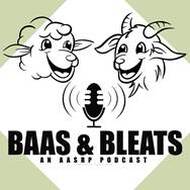 Are you a bovine or companion animal veterinarian interested in working with local dairy goat producers but need to brush up on your caprine knowledge? Maybe you own dairy goats and want to take your herd health and milk quality to the next level? The American Association of Small Ruminant Practitioners has a podcast for you! REPORT: XXI Middle-European Buiatrics Congress, ECSRHM Annual Conference and General Meeting6/27/2022  The XXI Middle-European Buiatrics Congress was held from May 19 to 22 at the Hotel Anders in Stare Jabłonki, north-eastern Poland, near the city of Olsztyn. The European College of Small Ruminant Health Management (ECSRHM) organized the general meeting and held an annual conference as part of this gathering. 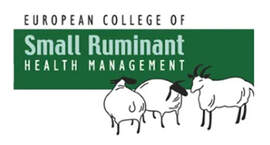 The organizing committee included Prof. Emilia Bagnicka from the Institute of Genetics and Animal Biotechnology Polish Academy of Sciences, Prof. Jarosław Kaba, Dr. Marcin Mickiewicz, and Ms. Zofia Nowek from the Division of Veterinary Epidemiology and Economics, Institute of Veterinary Medicine, Warsaw University of Life Sciences, and Dr. Adrian-Valentin Potârniche from the Faculty of Veterinary Medicine, University of Agricultural Sciences and Veterinary Medicine Cluj-Napoca Romania. On May 20, the ECSRHM General Meeting officially began with a visit to Mrs. Helena Wróblewska’s farm in Kierzliny. She described the history of her herd, which consisted of roughly 300 dairy goats. She also spoke about the farm’s daily schedule, manners, frequency of milking, and conditions for the welfare of the animals. Following the introduction, participants tasted products made by Mrs. Wróblewska, including milk, yogurt, various types of goat cheese, and some meat products. They also toured the facility to see the equipment used to make these products. Written by Tania Perálvarez Puerta Lack of data There is little information on the use of antibiotics in sheep and goats compared to other species. This may be because of the characteristics of the sector, which in general is very heterogeneous and not very high-tech (in some countries), which can make data collection and communication difficult. The collection of data on the use of antibiotics in small ruminants must be encouraged. This lack of data is a problem as in order to be able to determine the best antibiotic reduction strategy, we need to know details of antibiotic use in the sector: quantities, routes of administration, seasonality, variability between farms etc.
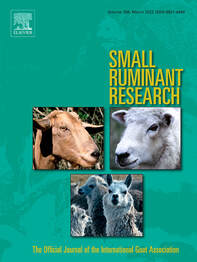 Contribution of small ruminants to food security for Ethiopian smallholder farmers Volume 184, March 2020, 106064 Hiwot Desta Wodajo, Biruk Alemu Gemeda, Wole Kinati, Annet Abenakyo Mulem, Anouka van Eerdewijk, Barbara Wieland Abstract This study investigates how and to what extent arguments related to food security influence preference of livestock species for women and men. Data was collected in four regions of Ethiopia through 92 focus group discussions (FGD) in communities where small ruminant production is common, Using a gender sensitive study designs, 23 FGDs were held separately with men, women and youth (male and female), and through a household survey involving 217 male and 212 women. Qualitative analysis was conducted to extract reasons given to explain the importance of livestock. Reasons related to food security were mapped to the four dimensions underpinning food security—accessibility, availability, nutritional value and stability. All FGDs considered sheep the most important livestock species, followed by cattle, with women allocating higher scores to sheep than men. All four dimensions of food security came up in statements explaining the importance of species but with variations across species. Interestingly, food security related arguments were most prevalent for goats followed by poultry. Of reasons given by women concerning the importance of goats, 78 % were related to food security with all four dimensions represented, and 52 % for poultry with two dimensions (availability and nutritional value). Answers from men especially had a stronger focus on economic reasons directly linked to income generation. Nevertheless, 64 % of men’s arguments for goats were related to food security. For sheep however, women only scored higher for arguments related to availability. When investigating purpose of small ruminant production at household level through a household survey, the importance of small ruminants for food security were confirmed; however, gender differences were less apparent. Being able to sell animals at short notice was the main reason for keeping small ruminants for both women and men followed by meat and milk for home consumption. Women’s argument for prioritizing selling were accessibility. For men, key arguments for selling were related to availability. For meat and milk their nutritional value was an important argument. Comparing agroecologies, accessibility (selling) was ranked top in highland areas and nutritional value (milk) was most important in lowland areas. In conclusion, this study provides much needed evidence on how small ruminants contribute to different dimensions of food security and are promising entry points targeting women to improve food and nutritional security by providing adequate animal source foods in a household. To read the entire article, visit SRR February 2 at 7 pm, 2022, NC State Sheep and Goat Extension, USA
This webinar will explore the importance of record keeping and recording keeping systems for small ruminants. Join the North Carolina Cooperative Extension Small Ruminant Team and Rafael Bravo, sheep producer in Polk county, to discuss the importance of record keeping on small ruminant operations and practical ways to implement record keeping systems. Learn how records can be used to identify strengths and weaknesses in a flock, establish goals and priorities, and make management decisions. 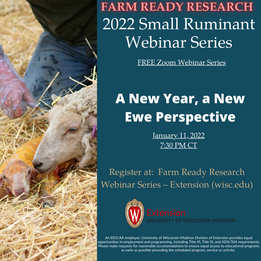 Farm Ready Research is Extension’s agriculture winter webinar meeting series for farmers and ag professionals. Learn the most up-to-date information on topics from dairy and livestock production to forage and farm management. Tuesday, January 11, 7:30-8:30pm A new year, a new ewe perspective Todd Taylor, the University of Wisconsin-Madison Sheep Research Program Manager for the Arlington Agricultural Research Station Sheep Unit, will discuss the most complex sheep on the farm, the ewe. As the ewe moves through the production cycle, her needs change. Join Todd as he covers productive ewe management during a typical year to maintain her useful contribution as part of the flock for many years. Tuesday, February 8, 7:30-8:30pm Strategic and cost-effective mineral nutrition in sheep Dr. Whit Stewart, Assistant Professor and Extension Sheep Specialist for the University of Wyoming, will discuss the factors that help producers achieve more returns from their mineral nutrition program. Accounting for seasonal changes in mineral content of basal diets, changes in requirements across stages of production (maintenance to lactation), and breed differences in mineral requirements can help us fine-tune the money spent on a mineral program. Additional management factors such as reducing variable consumption and using soil geochemistry in your region to help overcome deficiencies will also be discussed. Time for questions and answers will be provided. PreCOP 26 Side Event “All4Climate-Italy 2021” – October 1, 2021 Pre-COP26 webinar showcases the Peste des petits ruminants Global Eradication Programme as an enabler of climate resilience
from the American Consortium for Small Ruminant Parasite Control 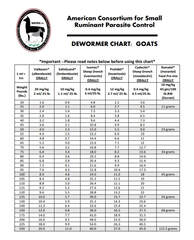 Drug resistance to multiple drugs and sometimes to all available drugs in parasites of goats is extremely common. In order to deliver effective treatments to their animals, it is recommended that producers learn which dewormers still work on their farms by doing fecal egg count reduction tests (FECRT, comparing before and after fecal egg counts) or having a DrenchRite® larval development assay (LDA) done. Several land grant universities now offer low cost ($5/sample) fecal egg counting for this purpose. For more information, go to https://www.wormx.info/lowcostfec. For information about the cost and availability of the DrenchRite test, send an email to [email protected]. To improve the effectiveness of deworming treatments, it is now recommended that goats be given combination treatments. A combination treatment is when you give drugs from different classes to the same animal at the same time. It is important not to mix the different drugs together as they are not chemically compatible. They should be given separately, but can all be given at the same time, one right after the other. It is always recommended to treat goats selectively given their individual need for treatment based on FAMACHA© score and/or the Five Point Check©. Sometimes performance (ADG, milk production, litter size) is used as a criterion for deworming. This recommendation is even more important when using drugs in combination. If all animals in the herd are treated, resistance to the dewormers will develop rapidly, and if using a combination, there will be nothing left to use when this happens. Go to wormx.info for more information on drug choice and drug resistance. This chart was originally developed by Ray M. Kaplan, DVM, PhD, DACVM, DEVPC (University of Georgia) with subsequent contributions by Patty Scharko DVM, MPH (Clemson University). It was last updated October 2021 by Michael Pesato DVM DABVP (Mississippi State University). |
IGA Blog
The International Goat Association promotes goat research and development for the benefit of humankind, to alleviate poverty, to promote prosperity and to improve the quality of life. Archives
May 2024
Categories
All
|
|
International Goat Association
2516 Millbrook Rd., Little Rock, AR72227 USA email: [email protected] -454-1641 |


 RSS Feed
RSS Feed